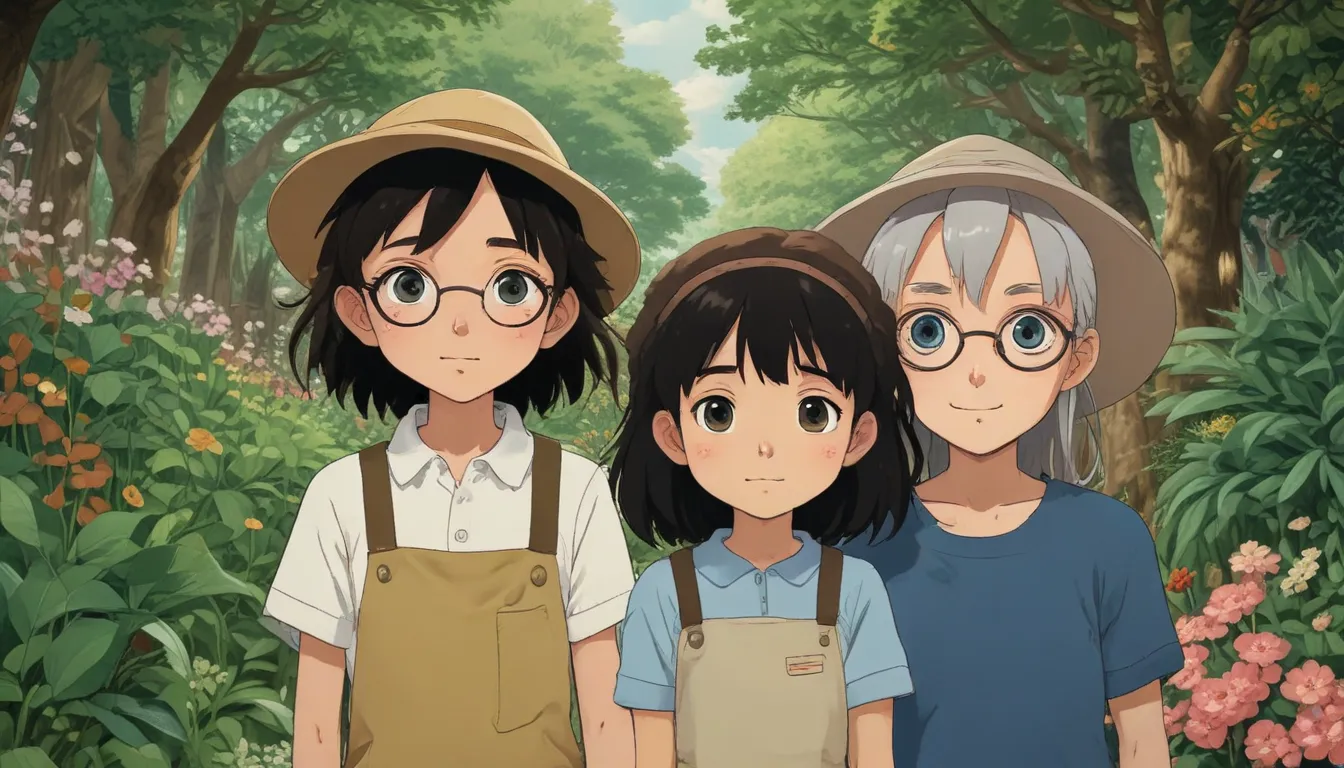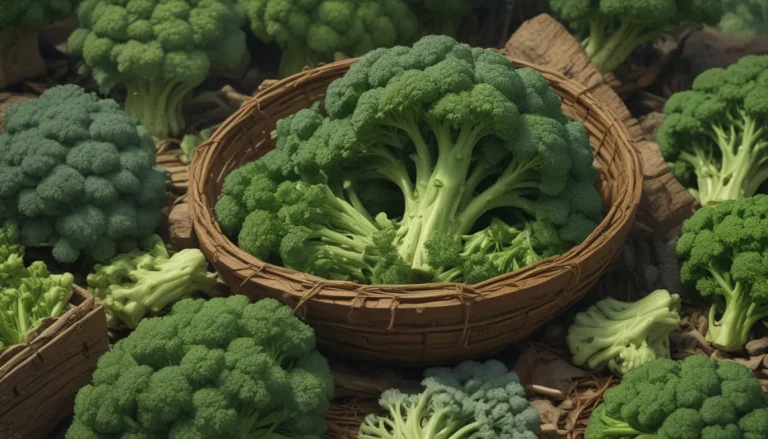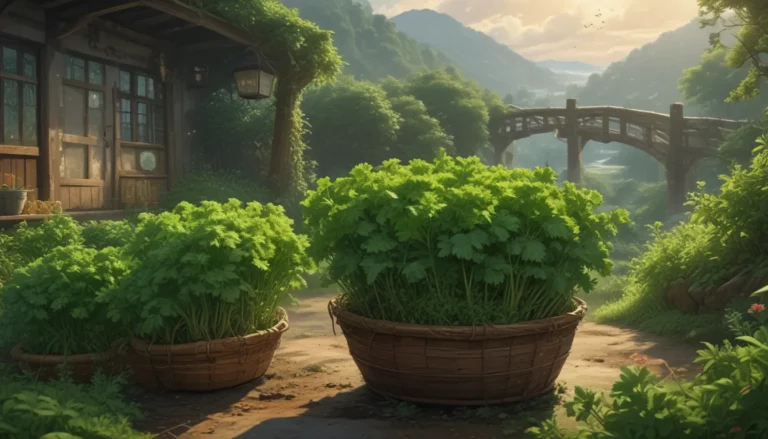A Comprehensive Guide on Growing Black-Eyed Peas

Have you ever wanted to grow your own black-eyed peas, but didn’t know where to start? Well, you’re in luck! In this article, I’ll walk you through everything you need to know about growing these Southern US favorites right in your own backyard.
Black-eyed peas are not only a New Year’s Day tradition, but they’re also a great addition to your vegetable garden. These legumes are easy to grow, require minimal maintenance, and are known for their drought resistance and ability to improve soil health.
So, if you’re ready to dive into the world of growing black-eyed peas, keep reading to learn how you can cultivate these versatile beans in your own garden.
What Are Black-Eyed Peas?
Before we get into how to grow them, let’s talk a little bit about what black-eyed peas actually are. Despite their name, black-eyed peas are not peas at all – they’re beans! These legumes belong to the Fabaceae family and are known for their black “eye” where the seed attaches to the inner pod.
Originating in Africa, black-eyed peas are members of the Vigna genus and are part of the larger species V. unguiculata, also known as “cowpeas.” They come in various cultivars such as Southern, crowder, and field peas. These beans are commonly used in soul food cuisine and have recently gained popularity in farm-to-table dishes.
Black-eyed peas are not only delicious but also highly nutritious. They are rich in dietary fiber, protein, polyphenols, folate, and iron, making them a healthy addition to your diet.
Cultivation and History
Black-eyed peas have a rich history, originating in West Africa and making their way to the United States as a staple food crop. These legumes were brought over on slave ships and have been grown in the American South for generations.
Known as “miracle peas” in sub-Saharan Africa due to their nutritional value and ability to grow in harsh conditions, black-eyed peas have become a symbol of wealth and good luck, especially when eaten on New Year’s Day.
In terms of cultivation, black-eyed peas are best grown in USDA Hardiness Zones 5-11. They thrive in hot, humid conditions and can tolerate drought and poor soil. These legumes are not only easy to grow but also beneficial for improving soil health by fixing nitrogen.
Propagation
When it comes to growing black-eyed peas, it’s best to direct sow the seeds in your garden. Wait until the soil has warmed to at least 65°F in the spring before planting. Sow the seeds 4-6 inches apart in rows 2.5-3 feet apart and about 1.5 inches deep.
One thing to keep in mind is that black-eyed peas have a beneficial symbiotic relationship with certain bacteria in the soil that help them absorb nitrogen. To ensure this nitrogen fixation process, consider treating your seeds with an inoculant containing these beneficial bacteria before planting.
You can find inoculants specifically designed for legumes at your local farm supply store. By applying this inoculant to your seeds, you’ll help foster a healthy relationship between the plants and the bacteria, resulting in better growth and nitrogen fixation.
How to Grow
Black-eyed peas are relatively low-maintenance plants that grow best in well-drained, sandy to loamy soil with a pH between 5.5 and 6.5. They require full sun and protection from strong winds. These legumes are light feeders and don’t need much fertilizer if soil inoculant is used at planting time.
When it comes to watering, black-eyed peas are drought-tolerant and only need supplemental water during prolonged dry spells. Make sure to water at the base of the plants to prevent powdery mildew and maintain good airflow by spacing the plants adequately.
Depending on the cultivar you choose, black-eyed peas can grow as knee-high bushes or sprawling vines that may require staking or trellising. Determinate varieties produce all at once, while indeterminate types produce beans throughout the season.
Growing Tips
To ensure successful growth and a bountiful harvest of black-eyed peas, here are some key tips to keep in mind:
- Plant in a full sun location with protection from high winds.
- Ensure the soil is well-draining as black-eyed peas can’t tolerate wet feet.
- Provide support, such as stakes or a trellis, for vining types to grow vertically.
- Keep the planting area weed-free and allow for good airflow between plants to prevent fungal infections.
By following these tips, you’ll set your black-eyed pea plants up for success and enjoy a plentiful harvest throughout the growing season.
Cultivars to Select
There are numerous cultivars of black-eyed peas available, with popular options including ‘California Black Eye,’ ‘Cream Pea Elite,’ and ‘Phenomenal.’ These cultivars come in bush or vining varieties, each with its own unique characteristics.
‘California Black Eye’ is a bush variety known for its compact growth and high yield, making it a popular choice for home gardeners. ‘Cream Pea Elite’ is another bush variety resistant to Fusarium wilt and known for its easy-to-shell beans.
If you’re looking for a splashier cultivar, consider trying ‘Phenomenal,’ a vining variety with purple-pink flowers and mottled beans. When selecting cultivars, look for descriptors such as “vining” or “needs staking” to determine the growth habit of the plants.
Managing Pests and Disease
Like any garden crop, black-eyed peas are susceptible to pests and diseases that can affect their growth and yield. Common pests that may target black-eyed peas include aphids, bean beetles, leafhoppers, and root-knot nematodes.
To protect your plants from these pests, consider using natural solutions such as neem oil, insecticidal soap, or diatomaceous earth. Additionally, practicing good garden hygiene, such as removing infected plants and rotating crops, can help prevent pest infestations.
In terms of diseases, black-eyed peas may be affected by bean mosaic virus, Fusarium wilt, and powdery mildew. To prevent the spread of these diseases, it’s essential to remove infected plants and dispose of them properly. Selecting disease-resistant cultivars like ‘Cream Pea Elite’ can also help minimize the risk of infection.
Harvesting
Harvesting black-eyed peas is a rewarding experience, as these plants produce edible parts at every stage of growth. You can enjoy the young leaves, immature pods, and fresh shelled beans throughout the growing season.
For the freshest taste, harvest the young leaves and immature pods when they’re tender and flavorful. As the pods mature and fill with seeds, they can be harvested at the “shellie” stage, where the beans can be shelled and enjoyed fresh.
Once the pods dry and turn tan, you can harvest the dried beans for storage or planting. Spread the shelled peas in a single layer to dry completely before storing them in a cool, dry place.
Whether you enjoy black-eyed peas fresh, frozen, or dried, harvesting your own crop is a fulfilling experience that allows you to savor the flavors of homegrown produce all year round.
Preserving
To preserve black-eyed peas for long-term storage, consider drying the beans and storing them in an airtight container in a cool, dry place. Fresh beans can be blanched and frozen for later use in cooking and recipes.
Fresh leaves, pods, and shelled beans should be refrigerated and consumed within a few days to maintain freshness and flavor. If you’re planning to freeze fresh beans, make sure to blanch them before storing them to preserve their texture and taste.
By following proper preservation techniques, you can enjoy the flavors of homegrown black-eyed peas throughout the year and savor the taste of your harvest in various culinary dishes.
Recipes and Cooking Ideas
Black-eyed peas are a versatile ingredient that can be used in a variety of recipes and dishes. From traditional Southern preparations to modern culinary creations, there are endless possibilities for incorporating black-eyed peas into your cooking.
Whether you prefer classic dishes like black-eyed peas with ham or more creative recipes like black-eyed pea noodle bowls, there’s a recipe out there to suit every taste and preference.
Experiment with different flavors and seasonings to create unique dishes that showcase the rich, earthy taste of black-eyed peas. From soups and stews to salads and side dishes, the culinary possibilities are endless when it comes to cooking with black-eyed peas.
Quick Reference Growing Guide
For a quick overview of growing black-eyed peas, refer to the following guide:
- Plant Type: Annual vegetable
- Water Needs: Low to moderate
- Native to: West Africa
- Hardiness (USDA Zone): 5-11
- Season: Summer
- Exposure: Full sun
- Time to Maturity: 80-100 days
- Height: 8-24 inches (bush varieties), 6 feet (vining types)
- Spread: 10-18 inches
- Tolerance: Heat, low fertility soil, drought.
- Common Pests: Aphids, bean beetles, leafhoppers, root-knot nematodes
- Common Diseases: Bean mosaic virus, Fusarium wilt, powdery mildew
By following these guidelines, you’ll be well on your way to successfully growing black-eyed peas in your own garden and enjoying the flavors of this versatile legume.
Grow Your Own Luck
In conclusion, growing black-eyed peas is a rewarding experience that offers a wealth of benefits for home gardeners. From their nutritional value to their culinary versatility, black-eyed peas are a valuable addition to any garden.
By following the tips and guidelines outlined in this article, you can cultivate your own crop of black-eyed peas and enjoy the flavors of homegrown produce throughout the year.
So, why wait for New Year’s to enjoy the good luck and rich flavors of black-eyed peas? Plant your own crop today and savor the taste of homegrown goodness in every bite.
For more information on growing beans and other vegetables in your garden, check out our other guides for valuable tips and insights into successful gardening practices.
If you have any questions or would like to share your own black-eyed pea growing experiences, feel free to leave a comment below. Happy gardening!
Disclaimer: This article is intended for educational purposes only and does not constitute professional gardening advice. Please consult with a gardening expert or horticulturist for personalized guidance on growing black-eyed peas in your specific location and conditions.





